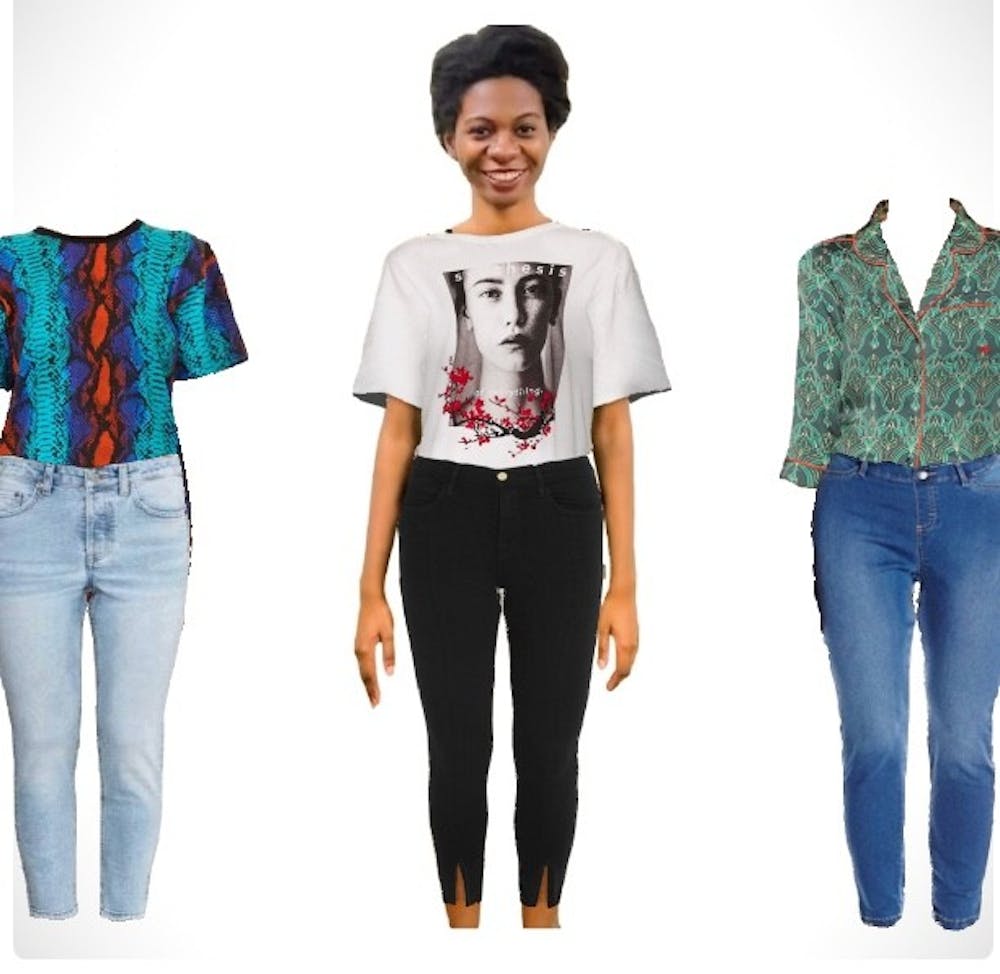Online shopping can be great: the world of fashion is at your fingertips and can easily be yours with a few clicks of a button. However, many problems can arise. Waiting for the items may seem endless and you can’t be certain the clothes will fit.
Thanks to Zeekit, a new shopping app that hosted its U.S. launch party on Dec. 1, some of those problems may disappear.
Zeekit is an Israel-based clothing app that allows customers to virtually try on clothing using computer vision technology. Originally used for Israeli air force radar missions, this technology would interpret how a flat image of a landscape behaves in 3D to determine how something would fall on that landscape.
From there, Zeekit Operations Manager Samantha Kufeld said that developers applied this same strategy to the human body.
“[The developers] had a eureka moment, thinking, ‘What if we could look at the human body as its own landscape?’” Kufeld said. “We take a flat picture of an item of clothing, break it up to determine the behavior of all the little segments on the item and map that onto the picture of the human body. So essentially, solving the dilemma of shopping online, which is: How does a flat picture of something look on me?”
The process is simple: users take a photo wearing a tank top and shorts and enter their height. The technology processes the image and allows users to try on various fashion options found in the app.
“From that, the technology can make a very accurate estimation about what your bust, waist and hip measurements are,” Kufeld said. “From that as well as the data about the size chart for the specific company that you’re trying on, it will suggest a given size for you.”
Although this information is calculated, the latest update doesn’t display this information upon the user’s request.
The app allows users to become the model to try on clothes, similar to a dress-up game. Users can try on clothing items from popular brands including Forever 21, Topshop, Adidas and more, with hundreds of options added every day.
“We can add any product that’s sold online onto the app,” Kufeld said. “When someone wants to make a purchase, it gets redirected ... to the host site to make the purchase.”
The app already has more than 10,000 downloads since it officially released in summer 2016. However, that number is expected to increase after the app’s U.S. launch party.
Since the app is fairly new, it is important to note there are some drawbacks. For starters, users are limited to only seeing how clothes look from the front, and some options may look slightly unnatural. Nonetheless, there are plenty of impressive options that give users an idea of how an article of clothing would look on them, most of which are up to date.
“We have a system for how we decide which products get uploaded onto the app,” Kufeld said. “We have a list of top brands that we constantly want to be updating, and the types of products and guidelines about what we should be updating. So, if something were to go on sale, or a size runs out, or it becomes sold out, it updates automatically on the app.”
And it doesn’t end there. Creative Director Jenna Guarascio said that the app acts as a social and a shopping platform, presenting users with styling and outfitting cards to save and share fashion ideas with friends.
“We will eventually be building something a little bit bigger where each user will essentially have their own profile and be able to see what [their friends on the app] are saving,” Guarascio said. “We really want to give that visibility to everyone around you that you’re influenced by as well as give you your own platform to express yourself and your style.”
Some style cards include outfits worn at events like the AMAs for users to try on. The app hopes to make the process of exchanging looks with friends more fun while giving users an excuse to escape from the day, Guarascio said.
While the app can appeal to various age groups, the primary demographic consists of young adults. Guarascio said the company has focused on Gen Z and millennials since they easily adapt to new technology, and the company can, in turn, learn from them.
While women make up the majority of this demographic, men are able to use the app as well. Although the app allows users to select their gender as male or female, moving forward, it hopes to become more inclusive to other gender identities.
“Currently, every shopping app that I’ve seen you have to choose and search either by men or women, so we kind of want to open that up,” Guarascio said. “When we roll out the next version of our app, you’ll have the option if you want to choose your gender or ... unisex.”
Other future updates include allowing users to upload any products that they want to try on.
“For any user to be able to make their own content on the app that they’re interested in . . . it’s created by you for you,” Kufeld said. “[It’s] what you want to be trying on, what you’re interested in seeing.”
The company is currently reaching out to campus students to get involved with the company as ambassadors, representing the company and contributing content.





